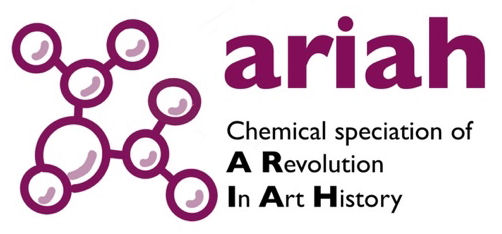The ARIAH (Chemical Speciation of A Revolution In Art History) project seeks to unravel the intricate molecular and nanoscale composition of Renaissance mixed-media paints, which combined egg- and oil-based binders. This material innovation marked a transformative period in art history, enabling masterpieces by figures like Leonardo da Vinci and Sandro Botticelli. However, the chemical and structural properties of these paints remain insufficiently understood, limiting our ability to fully explore the interaction between material advances and artistic techniques.
ARIAH integrates advanced analytical methods, including x-ray Raman scattering (XRS), scanning transmission x-ray microscopy (STXM), deep-UV photoluminescence microscopy, and atomic force microscopy infrared spectroscopy (AFM-IR), alongside mass spectrometry. These state-of-the-art techniques establish new standards for the study of heritage materials, offering unprecedented insights into the chemistry and nanostructure of mixed media paints. The findings drive innovation in the preservation of cultural heritage while deepening our understanding of the technological and artistic processes that shaped Renaissance masterpieces.
This interdisciplinary project bridges physical chemistry and art history to contextualize scientific findings within broader cultural and historical narratives. By illuminating the relationship between material properties, artistic practices, and social influences, ARIAH enriches the appreciation of Renaissance art and provides a holistic framework for studying cultural heritage. The results promise lasting impacts on the preservation, interpretation and celebration of one of the most pivotal artistic epochs of history.
Cutting-edge spectroscopic and imaging techniques have revealed the molecular interactions and material behaviors that characterized these complex systems. These findings substantially advance our knowledge of Renaissance art materials and their preservation.
High-resolution x-ray Raman scattering (XRS) proved instrumental in uncovering the chemical composition of mixed-media paints, distinguishing between tempera grassa and protein-coated oil paints. The model paints, formulated using historically accurate methods, provided detailed carbon speciation data collected at large-scale facilities throughout the world (ESRF, France and SSRL, United States). Highlights include identifying functional group transitions, minimizing radiation damage, and establishing XRS as a foundational tool for historical paint studies. The cryogenic setups further enhanced the analytical accuracy, ensuring reliable results.
Complementary techniques, such as scanning transmission x-ray microscopy (STXM) and advanced photoluminescence methods, offered nanoscale insights into paint layer heterogeneity. STXM analyses at the SOLEIL synchrotron facility revealed chemical heterogeneity in tempera paints, uncovering oxidative processes and binder interactions. A python-based pipeline was developed to process and classify spectral data, enhancing analytical robustness. Additionally, deep-UV photoluminescence and multispectral luminescence microscopy mapped protein and oil components, identifying their spatial distribution and providing insight into the preparation methods of paint layers. Atomic Force Microscopy-based infrared spectroscopy (AFM-IR) further enriched the understanding of paint microstructure, revealing nanoscale features such as preferential functional group orientation in relation to the pigments and the subsequent formation of lead carboxylates.
Together, these advanced methodologies provided a comprehensive framework for studying the chemical and structural organization of Renaissance paints, paving the way for future research on the preservation of cultural heritage.






